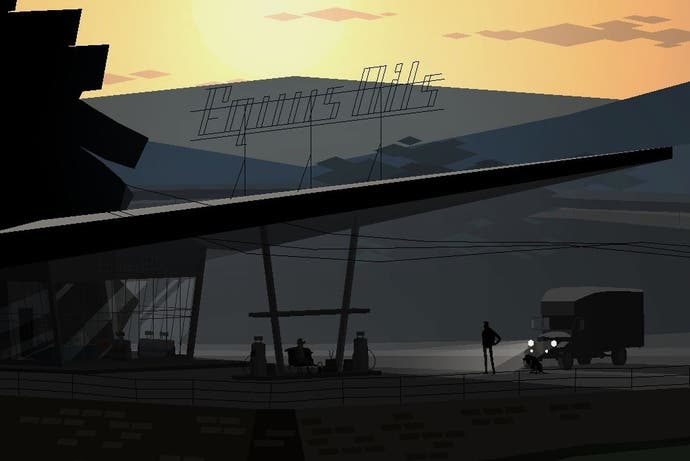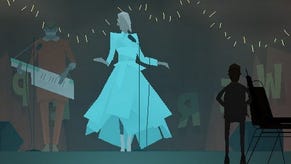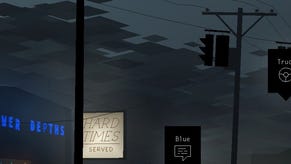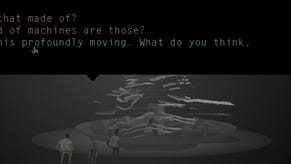Where the road takes you: investigating Kentucky Route Zero
Jake Elliott of Cardboard Computer opens up about his surreal indie adventure.
Kentucky Route Zero is a fascinating game. The IGF-nominated adventure is so fascinating, in fact, that we've taken the unusual decision not to review it, despite the first of five episodes being available to download right now.
The simple truth is that having reached the end of the "first act", I'm intrigued - but have absolutely no idea where the story is going. In a game as narrative-led as this, a review at this juncture seems as pointless as reviewing a novel based on the first chapter or offering criticism of a movie after watching the opening 20 minutes.
And that, in itself, is exciting. Previous episodic games have been careful to portion out their story and gameplay in self-contained chunks with clear goals and cliffhangers to lead you into the next chapter. Act one of Kentucky Route Zero, by comparison, is deliciously inconclusive.
We meet Conway, an antique deliveryman looking for an address that appears on no map. Stopping at an isolated gas station, he meets a crusty old fellow who points him in the direction of Route Zero, apparently the only way to get to where he's going. There's an eerie farmhouse, an abandoned mine and people who may - or may not - be ghosts. Old TV sets seem to be important. Horses are a recurring motif.
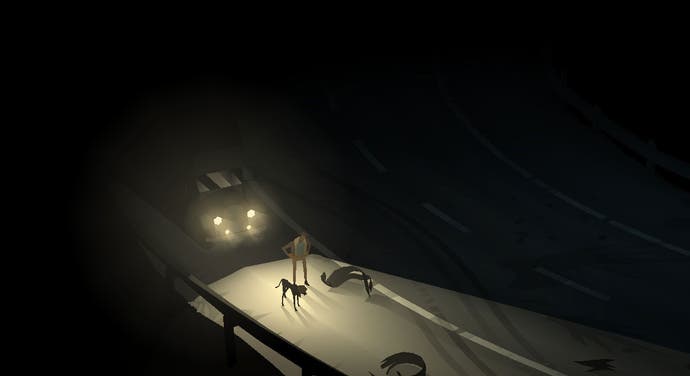
The game unfolds much like a point-and-click adventure, but what puzzles there are barely warrant the term and the conversation trees lack the ruthlessly quizzical edge the genre usually favours. Most dialogue options don't even seem all that important, the freedom to explore a small network of roads always tugs you to where you need to be and the game ends abruptly - literally dropping you back to the desktop - just as Conway reaches the the mysterious subterranean highway of the title.
So rather than pontificate on a story that's only one-fifth told, we decided to contact Cardboard Computer, the two-man indie team responsible, looking for insight into the journey ahead.
Jake Elliott and Tamas Kemenczy met at art school seven years ago and have been collaborating on digital art and audiovisual performance ever since. "In 2009 or so, our friend jonCates came up with a project that the three of us developed together," Jake explains. The project was "a sort of surreal artgame remix" of Will Crowther's classic text adventure Colossal Cave Adventure. "After that, Tamas and I really wanted to work on more games together," Jake continues. "The more 'established' game industry thing was never really a part of our thinking."
Nor, it seems, was this merely an academic exercise in genre. Kentucky Route Zero may have arrived alongside a slew of games that attempt to reinvent the adventure game format of old, but that wasn't the original plan. "Our process has been really organic and exploratory in making this game," says Jake. "The point-and-click adventure thing is an arrival rather than a destination. We've just been developing a workflow and a design and story conversation between the two of us over the last two years or so. I think we've really narrowed in on the kind of themes we want to work with, and that focus has driven us to alter the play mechanics until it's ended up looking, on the surface, like a point-and-click adventure game.
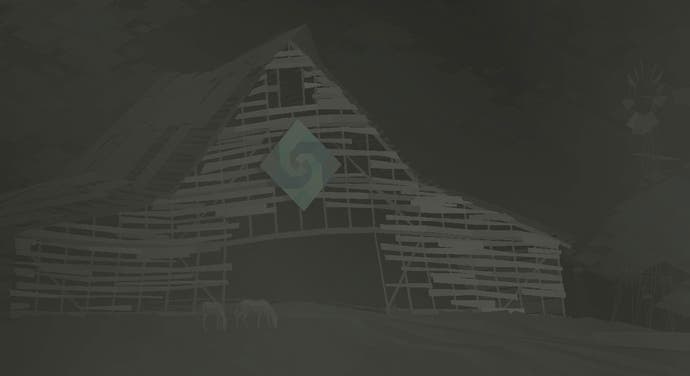
"That's not to say that we aren't taking any inspiration from those games," he adds, citing Syberia and The Dig as two personal favourites. "Those are a lot of our favourite games, because of their focus on characterisation and their theatricality, and just their weird charm."
Weird charm, as it turns out, is a pretty good soundbite description for the dreamy and slightly sinister bluegrass atmosphere of Kentucky Route Zero. The game has the woozy intensity of a fever dream, so it comes as no surprise to learn that the script has been ruthlessly edited down to its barest narrative essentials.
"We have an overall plot arc that has been determined since very early on, with very few changes, and then each episode has its own plot arc that was thumbnailed early on but is basically vulnerable to being totally rewritten at any time. We've worked together for a long time, and so we feel comfortable with an organic and intuitive process and trust each other to make big changes as we go.
"Dialogue is usually written quickly and then rewritten and edited obsessively," Jake continues. "One thing we try to do is cut out exposition and other excesses. 'Not ideas about the thing but the thing itself,' as Wallace Stevens said. And that's difficult to do! Difficult to cut dialogue text that we're attached to or like the sound of, sometimes. But it's a technique that we're using here, and it's based in trusting the player to fill in the blanks."
Oh, those wonderful blanks. There are lots of them in Kentucky Route Zero, and a large part of the game's pleasure comes from the realisation that this is not a game where the answers will be laid out in a neat sequence or suddenly made clear by choosing the right dialogue options. Released from the expected right/wrong structure of traditional gameplay, you're freed to approach the game like a shot of sipping bourbon - slowly savouring the taste, taking it at your own pace, relaxing into the experience without expectation. Turns out, that's completely intentional.
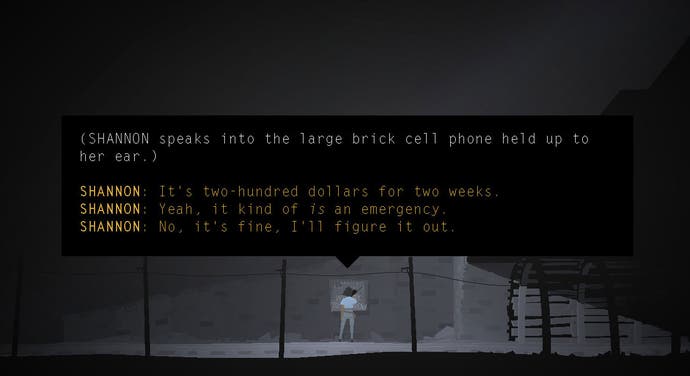
"We're thinking of the way the player interacts with Kentucky Route Zero like how an actor interacts with a play," says Jake. "They make decisions about how and when to move, what tones or emotions to inflect spoken dialogue, and what fictional back-story to construct for the character they're playing."
The theatrical nature of the game comes across in the visual style as well, a stark world of silhouettes and hazy light that feels incredibly stylish yet warmly familiar. Certainly, there are retro gaming influences at work here, alongside more highbrow artistic inspirations. "We're definitely a fan of Eric Chahi's Another World, as many folks have noticed," Jake admits. "But also, we've been drawing a lot on film, theatre and stage design for the art direction. Beowulf Borritt, Werner Herzog and Andrei Tarkovsky, to name a few, have been inspirational reference points for how we treat the compositions, lighting and camerawork. People have also likened the atmosphere to Twin Peaks, and we're both fans of the show and Lynch's other work.
"We also treat the environments as another vehicle of magic realism. The environments are grotesque and fantastical, but are also ordinary, and a lot of the detail work is grounded in the history of the region. Like the typography, designed by an employee at the IBM Lexington plant in the '50s, or the coal mine, modelled after ones from the region in the early 20th century. There's a lot of reading in the game, so a lot of care went into the presentation of the typography. The environments and sound design act as way to frame that experience."
So, yes, Kentucky Route Zero is a fascinating game. It's a part of a growing wave of totally story-driven games such as Dear Esther and Thirty Flights of Loving - "Those are great games!" gushes Jake - but it never lets its artistic ambitions overshadow the medium. You're always in control, always making choices, even if the impact of those choices doesn't come with a Gamerscore attached.
Even with the "artgame" movement on the rise, it's still rare to come across a game where the ultimate destination is so difficult to map. The only way to find out where Kentucky Route Zero leads is to follow it.
